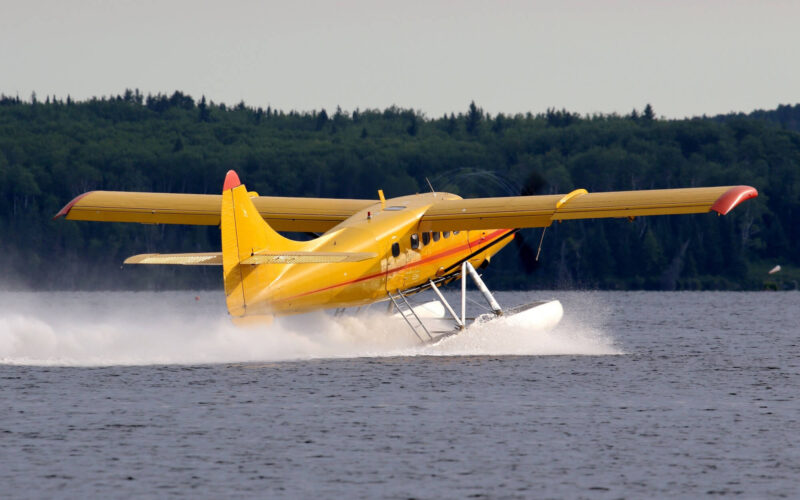Air crash investigators in the United States have issued an urgent safety recommendation after a fatal crash of a De Havilland Canada DHC-3 in Mutiny Bay, near Seattle.
The DHC-3 Turbine Otter, registered N725TH, impacted the water off Whidbey Island, Washington on September 4, 2022, killing the pilot and the nine passengers.
The National Transport Safety Board (NTSB) examined the wreckage of the single-engine floatplane and found that a clamp nut forming part of the horizontal stabilizer assembly had unscrewed and that a lock ring designed to prevent the clamp nut from unscrewing was not present.
If the clamp nut is not secured to the actuator barrel and they become separated, that means the actuator is unable to control the position of the horizontal stabilizer, the NTSB explained.
The horizontal stabilizer controls the pitch of a plane, the up and downward movement of the nose. If horizontal stabilizer control is lost, then pitch control is also reduced or lost, making it difficult or impossible to control a plane.

Lifting the wreckage. Credit: NTSB
The NTSB therefore urgently recommended on October 27, 2022, that the Federal Aviation Administration (FAA) and Transport Canada require all DHC-3 operators to immediately inspect the horizontal stabilizer lock ring.
“Immediate action needs to be taken to inspect the actuator of DHC-3 airplanes, of which 40% operate in the United States, to prevent a similar tragedy from happening,” said NTSB Chair Jennifer Homendy in a statement. “NTSB is issuing this urgent recommendation as a result of a significant finding made by NTSB investigators.
The NTSB recommendation came one day after Viking Air Limited, which holds the certificate for the DHC-3 airplane, published a service letter telling operators to “visually confirm that the stabilizer actuator lock ring is present, correctly seated in the groove in the upper housing…and the lock ring tang is engaged in the clamp nut.” Operators are to carry out the inspection upon receiving the letter, even if maintenance has been completed recently.
The FAA confirmed that it was contacting DHC-3 operators in the United States to confirm they were carrying out action in accordance with the service letter. The FAA said it was also in close contact with Transport Canada.

